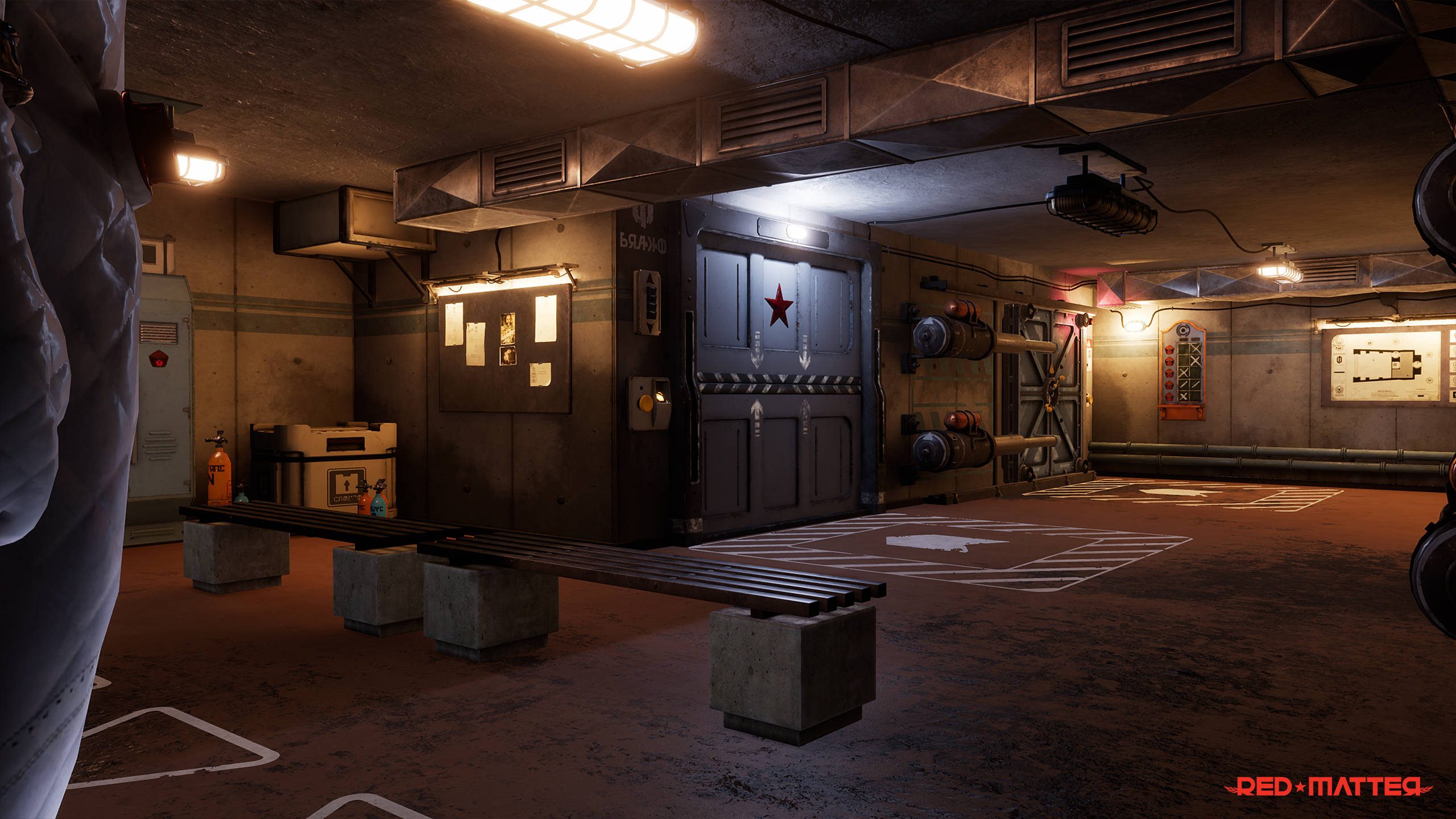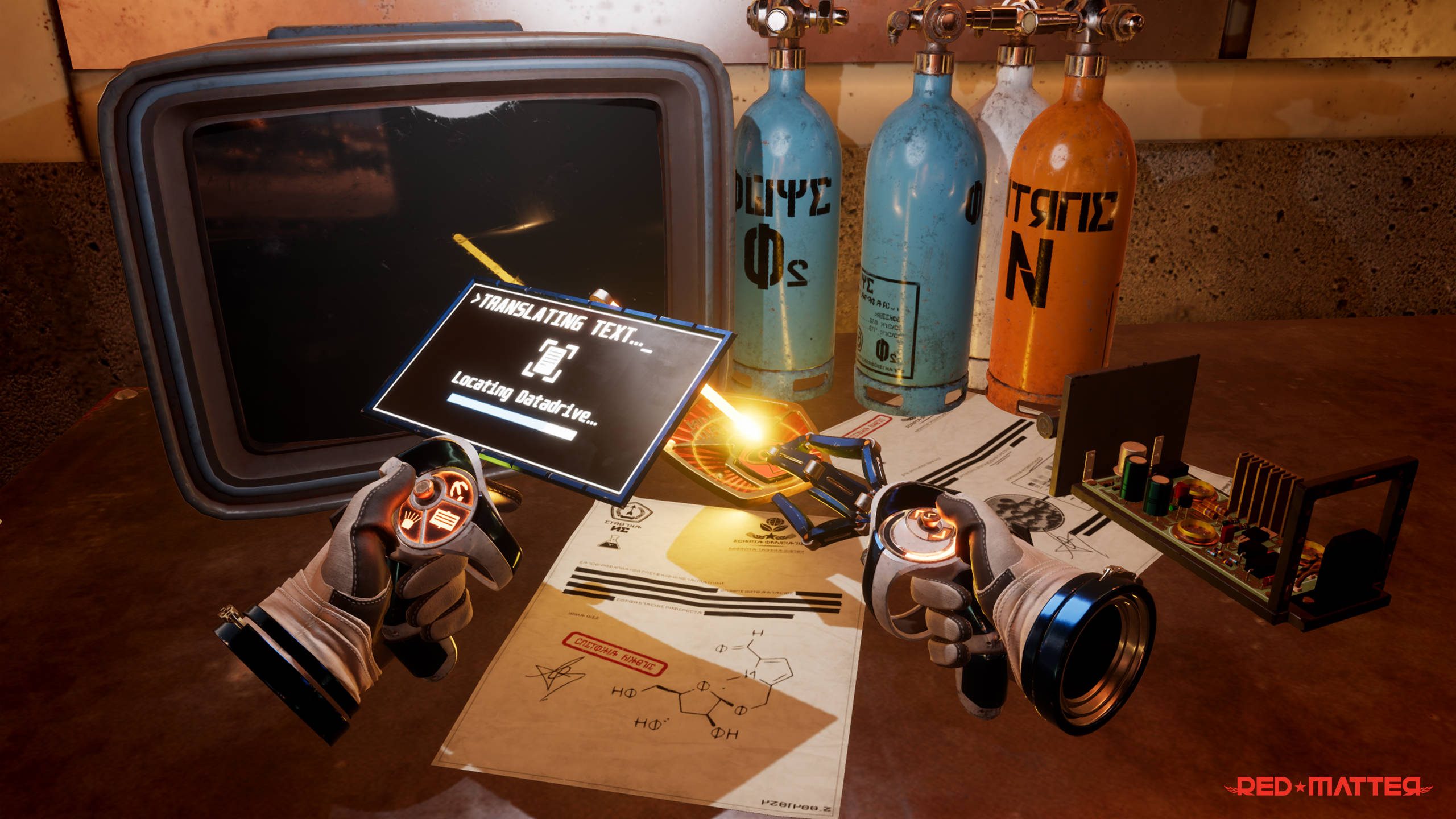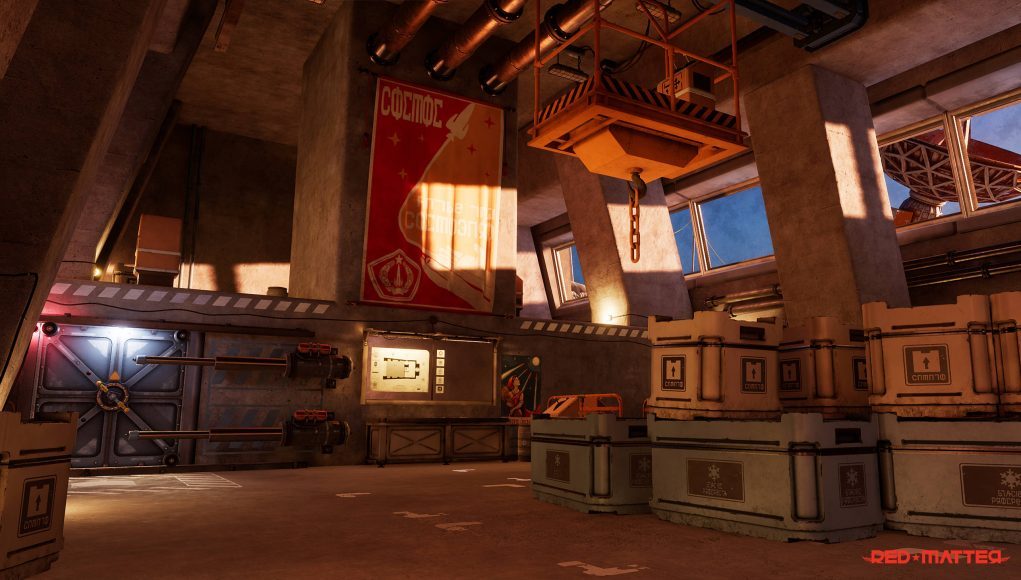Red Matter is an upcoming story-driven VR adventure puzzle game, first revealed at Oculus Connect, that puts you in a retro-futurist world that borrows elements from the Cold War-era and teases them out to an interesting logical conclusion.
Created by Madrid-based studio Vertical Robot, Red Matter places you in the role of an astronaut from the Atlantic Union who’s tasked with investigating one of a Volgravian top secret research project located on a distant planet.
Starting out the demo in an a rocky clearing, I find what appears to be a Volgravian sign bearing some faux-Slavic language using the Cyrillic script. With a data tool in my left hand and a gripper claw in the right, I point to the sign to activate the data tool’s translator function, revealing that a research facility is just up ahead.

The low-gravity environment of the planet means that instead of bounding your way around by foot, it’s more efficient to use your boosters to get from place to place. In real-world terms, this functions as an on-rails teleport; you pick your landing point and are transported there in a lofty arc at a variable speed controlled by the player. The default speed is nice and slow with no abrupt changes in acceleration, although you can speed up the boost from place to place to make it a quicker experience.
Moving towards a brutalist-style concrete building featuring a giant Soviet-style red star above its sign, I point my translator tool again at the illegible Volgravian script sitting below it. Yup. That’s the place I need to get into.
Pushing a button with my claw, the door retracts, revealing an industrial facility of some sort. The research subject is still unclear as I make my way further, replacing some fuses to another door that I scrounge from nearby panels. The door is heavy, and moves satisfyingly slow, giving it a weighty feel.

With one door puzzle down, I enter a small round room with a strange device in the middle. On the wall is a diagram with written instructions on how to operate it. Reading carefully, I pop open the device to reveal a strange two-handed crank that rotates the interior shell of the room to face an unseen metal blast door, that upon opening leads to an employee area.
I head into the employee area leading to several engineering departments. A schedule on the wall tells me which sector I need (of course with all the Soviet iconography of gold-trimmed red stars), as I’m told by my commander I need to find a specific secure room with who knows what in it.

Rustling through the employee lockers, I find a keycard. Instead of putting the card into my inventory, I was told I could scan it with my translator tool and record the data so I could then spit it back out later so I could leave the physical card behind. Traveling to the door and opening it up with my copied keycard data, I find a cell-sized room with a single lever covered with a few strange plants. Touching the alien flowers turns them an iridescent color – a sign that something even more strange was next if I pulled that lever.
I knew I had to, so I pulled the lever, and that’s when a strange substance leaked out of the panel, slowly spreading out over my whole field of view to obscure the world around me. Fade to back, demo over.
Design Director Tatiana Delgado calls the game’s Volgravian setting a “cross between the encroaching surveillance of George Orwell’s dystopian societies and Kafka’s absurd bureaucracy.” Delgado told me that while it’s still in development, that Red Matter is aiming for a 2.5-3 hour gameplay length, but it was too early to talk about launch dates at this time. The game is currently being advertised as an Oculus-only experience.







